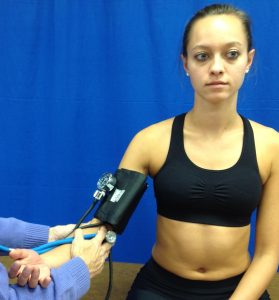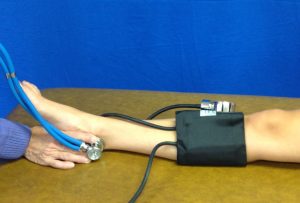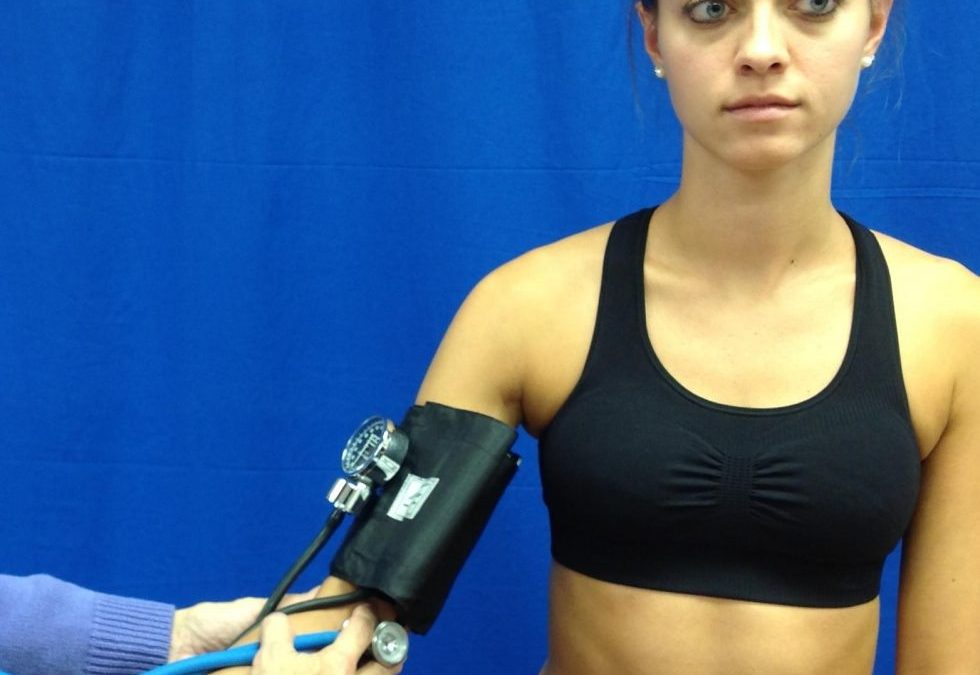

Ankle – Brachial Index
Ankle – Brachial Index (ABI) test is a quick, noninvasive way to check for peripheral artery disease (PAD). Research indicates that PAD affects about 10% of people over age 55 (Mayo Clinic, 2020).
ABI test may be recommended prior to surgery to assess circulatory surgical risk or in the presence of leg pain when walking. Risk factors for PAD include:
- History of tobacco use
- Diabetes
- High blood pressure
- High cholesterol
- Atherosclerosis
The ABI is a comparison of blood pressures. It compares the systolic blood pressure of the ankle and the arm.
Step #1: Have the client at rest for 5-10 minutes prior to measurement.
Step #2: Take the blood pressure of the upper extremity at the brachial artery.
Step #3: Take the blood pressure of the lower extremity of the same side at both the posterior tibial artery (left image) and the dorsalis pedis (right image). The higher value is used for the calculation.

Step #4: Calculations are…
- Right ABI = highest right ankle pressure / highest arm pressure
- Left ABI = highest left ankle pressure / highest arm pressure
Step #5: Interpretation = A low ankle-brachial index number can indicate narrowing or blockage of the arteries in the legs. This can indicate limited circulation and reduced ability to heal after surgery.
- 30 = non-compressible (severely calcified vessel)
- 00-1.30 = normal
- 90 – 0.99 = acceptable
- 80 – 0.89 = mild peripheral vascular disease
- 50 -0.79 = moderate peripheral vascular disease
- < 0.50 = severe peripheral vascular disease
The metrics associated with the ABI demonstrate it is an excellent diagnostic and screening test.
- Overall
- Sensitivity = 79-95%
- Specificity = >95%
- An ABI < 0.90 has been shown to have a sensitivity of 90% & a specificity of 98% for detecting a lower-extremity stenosis of > 50%.
- In the trauma setting, an ABI < 0.90 has been shown to have a sensitivity exceeding 87% & a specificity exceeding 97% for identifying lower-extremity arterial injury
Based on the outcome of the ABI test, various treatments and/or lifestyle changes may be recommended. For more cutting edge orthopedic information in iOrtho+ Premium Mobile App, please visit https://iortho.xyz/
- Gulick DT. iOrtho+ Mobile App. DTG Enterprises LLC. 2024
- Gulick, DT. OrthoNotes, 5th FA Davis Publishing, Philadelphia. 2023
- Johansen K, Lynch K, Paun M, Copass M. Non-invasive vascular tests reliably exclude occult arterial trauma in injured extremities. J Trauma. 1991 Apr. 31(4):515-9; discussion 519-522.
- Mayo Clinic. https://www.mayoclinic.org/tests-procedures/ankle-brachial-index/about/pac-20392934
- Norgren L, Hiatt W, Dormandy J, Nehler M, Harris K, Fowkes FG. Inter-society consensus for the management of peripheral artery disease.. Journal of Vascular Surgery. 2007;45(1):S5-S67
- Salameh MJ, Ratchford EV. Update on peripheral arterial disease & claudication rehabilitation. Physical Medicine Rehab Clinical North America. 2009;20(4):627-656
